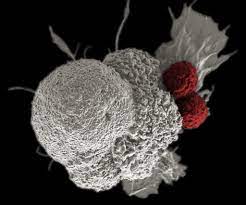Our immune system consists of hundreds of specialized cells dedicated solely to maintaining our well-being. This branch of our body is dedicated to fighting pathogens such as bacteria, viruses, parasites, and even our own mutated cells. Fundamentally, the cells of the immune system can be categorized into two main varieties: the innate immune system and the adaptive immune system.
The innate immune system is the first defense our body has against foreign invaders and involves responses that are not specific to the identity of the pathogen. The general functions of innate immunity encompass inflammation, surveillance for cells exhibiting abnormal activity, and initiating immediate responses to contain and eliminate threats. This response is rapid and serves as an initial step to curb infection and activate the adaptive immune system.
In contrast, the adaptive immune system consists of specialized cells that are finely tuned to target a specific pathogen or harmful cell with high accuracy. This system also is unique because it involves the creation of memory cells, which are replicas of these specialized cells, adept at recognizing and reacting to a specific pathogen upon future encounters. The adaptive immune system can be further divided into humoral immunity (B cells) and cell-mediated immunity (T cells). B cells are involved in humoral immunity and are precursors to antibodies, cells created to target and mark specific invaders for destruction by other immune cells. T cells include helper T cells, which activate B cells and other immune cells, and cytotoxic T cells, which kill infected target cells. T cells and B cells are the most vital components to maintaining a dynamic and adaptive response that extends past the general responses initiated by the innate immune systems.
Tumors are uncontrolled growths of abnormal cells that can travel to and destroy various parts of the body. Where T cells and B cells make their presence known, often activating and recruiting other cells to aid in an immune response, tumors seek the opposite. Tumors rely on slipping through the cracks of our immune system in order to grow their harmful cells, while avoiding attacks from our immune system.
One primary method that cancerous growths use to evade recognition is downregulating the expression of their own antigen presentation machinery. All cells are programmed to display parts of their cells on their surface for cell-to-cell recognition but also so immune cells can recognize any unfamiliar activity or pathogenic material. By downregulating the amount of molecules that a cell produces, it makes it harder for the immune system to recognize and subsequently target these cells for destruction.
Another method that tumors use to survive in the body includes T cell exhaustion. With a chronic disease, such as various types of cancer, constant activation of T cells can decrease the function and efficiency of T cells. As T cells remain constantly stimulated, T cells in the body adapt by expressing inhibitory receptors which when bound, decrease T cell activation levels. Eventually, with long-term stimulation, T cells may lose their functions, affecting their ability to effectively recognize and eliminate cancer cells. This phenomenon, known as T cell exhaustion, decreases the immune system’s ability to control tumor growth.
“Eventually, with long-term stimulation, T cells may lose their functions, affecting their ability to effectively recognize and eliminate cancer cells.”
Cancers can even avoid cell death. Normally, certain immune cells can induce apoptosis, or programmed cell death, in cells they suspect have been compromised or are malfunctioning. However, cancer cells often develop mechanisms to resist or evade this process. Some cancers have been able to create systems to downregulate signals that induce apoptosis. This evasion of cell death contributes to their survival and future proliferation.
The immune system is a complex and remarkable system that has evolved over millions of years. However, despite its efficiency, it is not immune to manipulation by cancerous cells. In the same way the immune system has evolved to serve numerous purposes and has created many avenues to target infected cells, tumors have devised intricate strategies to exploit natural vulnerabilities in the immune system and evade their death.






